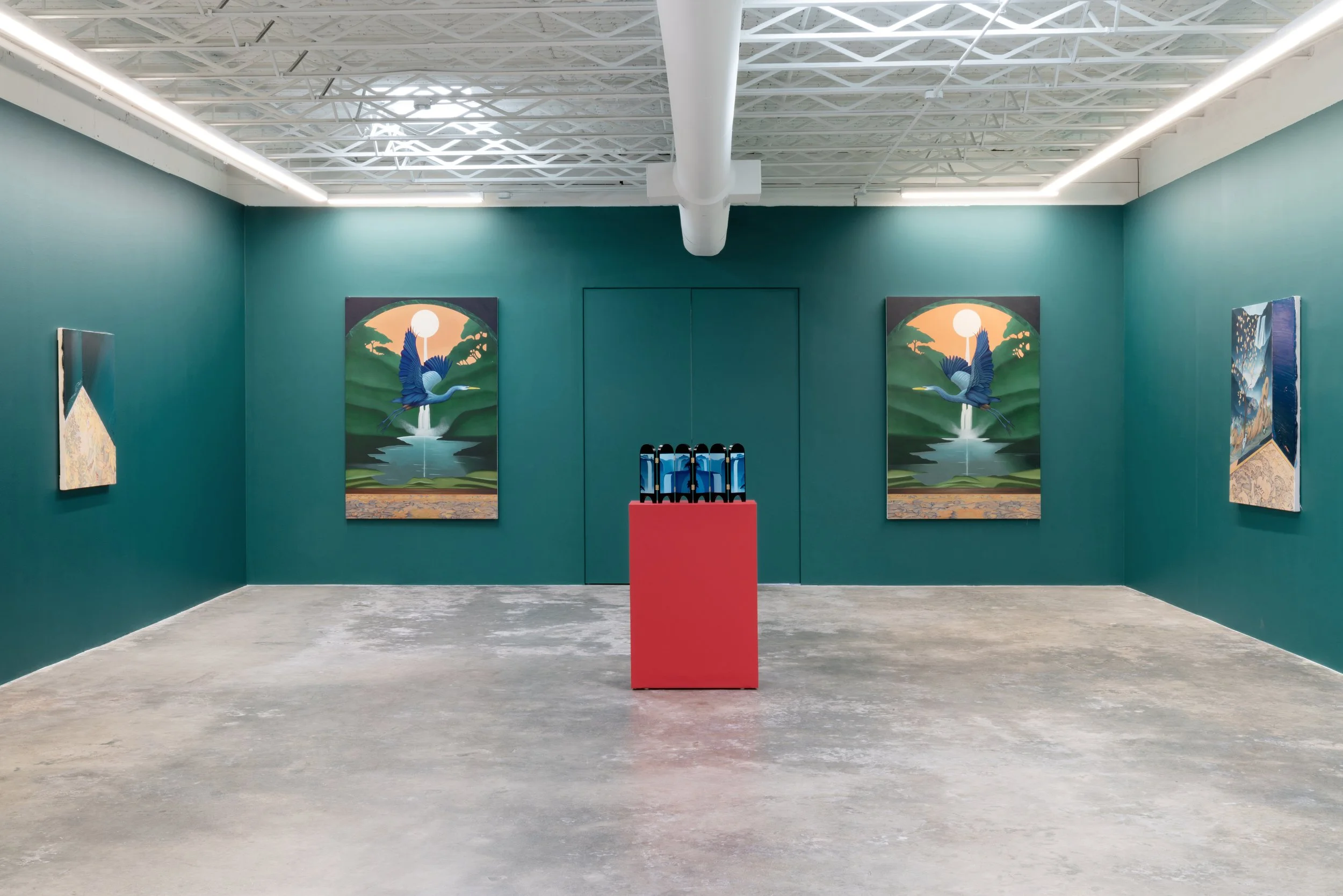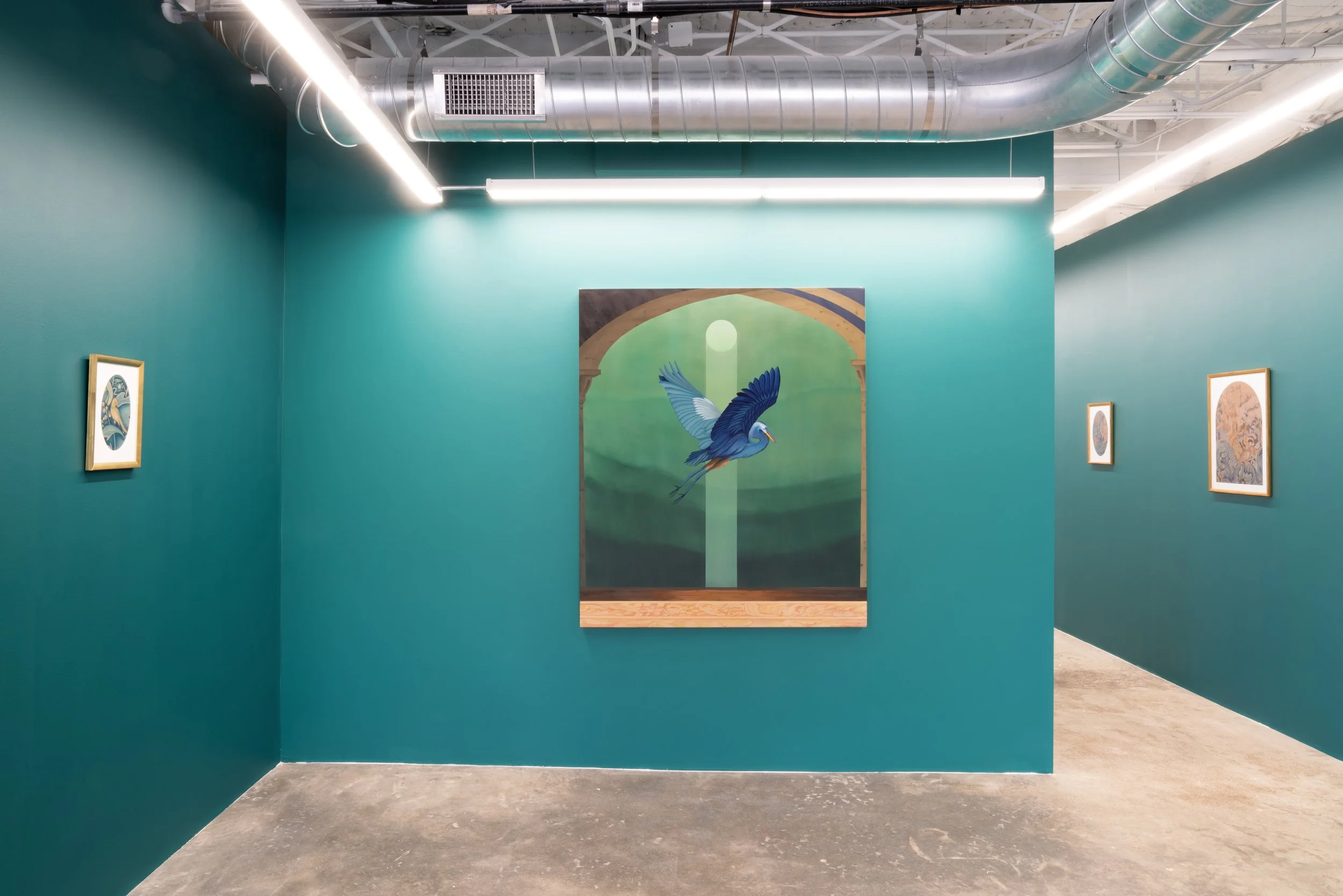Stephen Thorpe, Who Looks Outside, Dreams; Who Looks Inside, Awakes
View artist’s page here
Opening reception: March 22, 2024 6-9 PM
Exhibition continues through May 18, 2024
Wolfgang Gallery is pleased to present Stephen Thorpe’s first solo exhibition in Atlanta, ‘Who Looks Outside, Dreams; Who Looks Inside, Awakes,’ featuring a new body of work that offers a survey-like introduction to the artist’s practice. A graduate of the prestigious Royal College of Art in London and a former Professor of Painting at the Savannah College of Art and Design (SCAD), Thorpe paints interiors, informed by an ongoing interest in architecture, symbols, nature and cultural archetypes.
The paintings in ‘Who Looks Outside, Dreams; Who Looks Inside, Awakes’ depict threads of themes that regularly appear in Thorpe’s work – corners, rugs and birds – but emerging for the first time are waterfalls, reminiscent of the artist’s time spent hiking across North Georgia. In a nod to influences of Romanticism, as found in the paintings of German artist Casper David Freidrich, color fields reminiscent of Mark Rothko, and references to the Japanese painter and woodblock printmaker Kawase Hasui, the imagery in Thorpe’s paintings – ancient waterfalls, majestic mountains – triggers a primal instinct of awe and awakens the spiritual ancestry that resides in the recesses of one’s soul. The works point to the connections between the individual, humanity at large and nature, and reflect on the idea of the world being bigger than oneself. Paintings are intended as moments of solitude to experience elements of nature as ancient cultures might have done, loaded with meaning, and imbued with spirituality. The series is an attempt to apply meaning beyond scientific rationale and recognize the metaphysical nature of existence without over-rationalization, what the artist regards as a ubiquitous flaw of contemporary society.
Similar to previous series, the works in ‘Who Looks Outside, Dreams; Who Looks Inside, Awakes’ speak to archetypal symbols and Jungian ideas of the collective unconscious. Native birds of Georgia, revered in indigenous cultures for their closeness to higher powers, are painted in realistic detail in an ode to naturalist John James Audubon and represent a meditation between heaven and earth. Thorpe’s signature “corners” also feature prominently throughout the exhibition. Formed by three separate panes, the corners represent psychological space, an interior and exterior, or as Jung states, “a place of sanctuary for self-reflection.” Paintings in the show also mark Thorpe’s return to wider interior spaces – broader elements of “rooms” – which was the focus of his early career, brought to life through the inclusion of paneling in paintings, Chinoiserie wallpaper, Medieval tapestries and miniature, hand-painted folding screens. Here, where the paintings are sculptures, sculptural screens double as paintings.
Symbols and spaces are rendered in a distinct visual vocabulary. Thorpe’s painterly process continues to blur perception, alternating between wet and dry, smooth and rough, controlled and chaotic. Moody and foreboding yet quasi-utopian and idyllic, the landscape elements of the paintings are tight and representative, yet the decorative aspects of the work are looser and more abstract, rendered with a lighter touch, sometimes deliberately scratched back to the surface. An additional dimension of thickly applied paint, impasto in corners, grounds the work, reminding viewers of the artist’s hand, the conscious and unconscious choice of mark-making.




